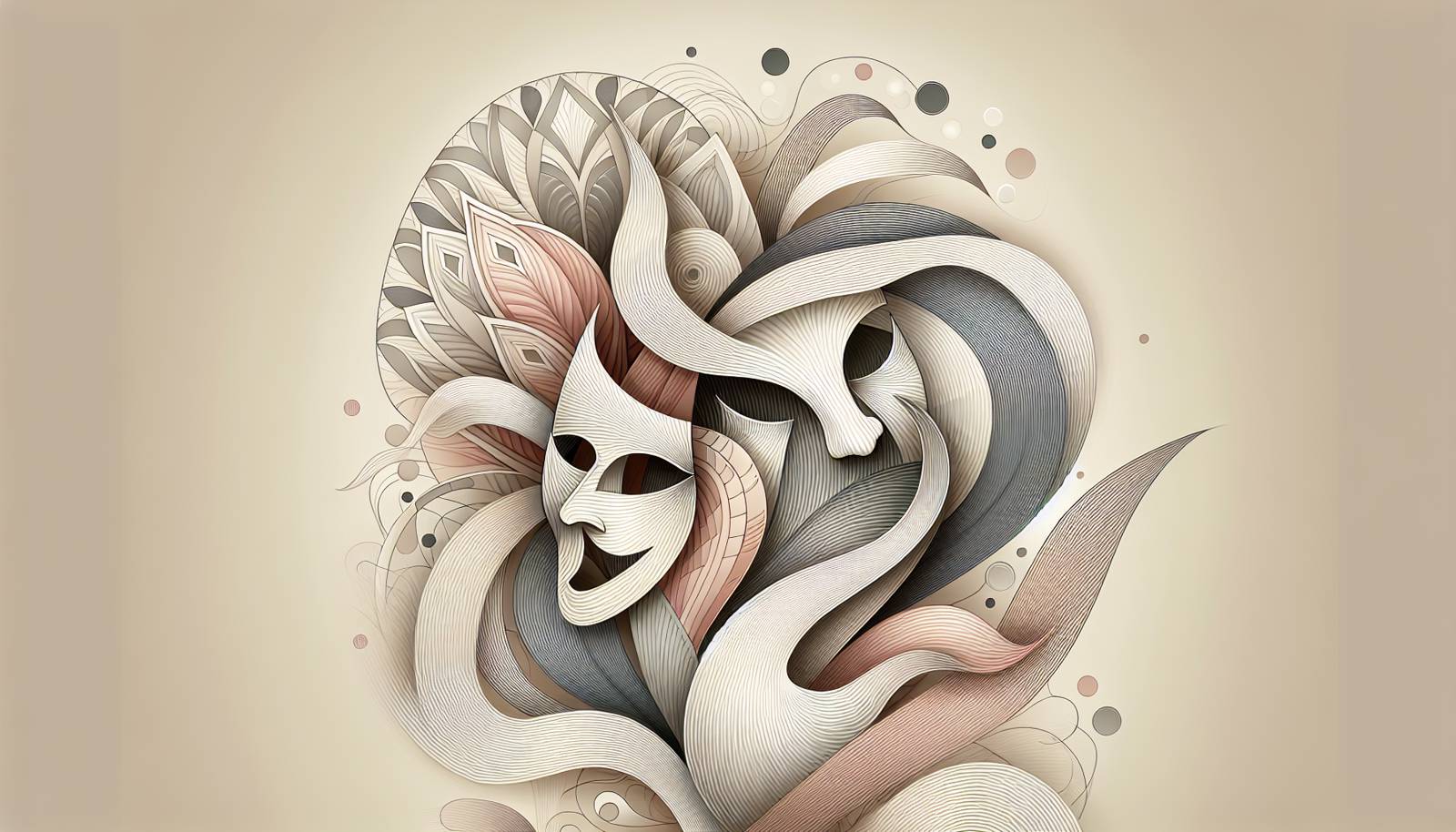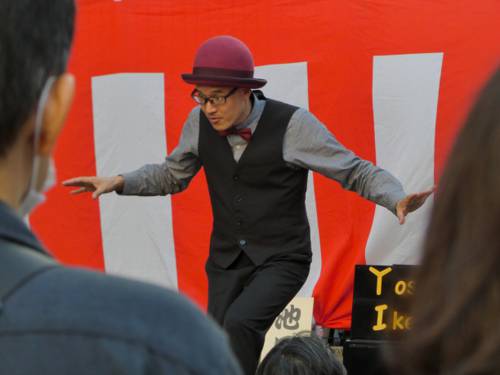
FAQ About The Role of Pantomime in Cultural Festivals

What is pantomime, and where did it originate?
Pantomime, often referred to as 'panto,' is a theatrical performance that combines music, slapstick comedy, and dance. It traditionally involves exaggerated characters, humor, and audience participation. Pantomime originated in ancient Greece and Rome as a dramatic performance genre where the story was told through body movements and facial expressions without speech. The modern form of pantomime as a family-friendly theatrical entertainment became popular in England during the 18th and 19th centuries.

How is pantomime used in cultural festivals?
Pantomime plays a significant role in cultural festivals by providing entertainment that bridges cultural gaps and engages audiences of all ages. These performances often encompass traditional stories, folklore, and contemporary themes, making them versatile for various festivals. Pantomime is usually characterized by its interactive nature, inviting the audience to participate, thereby enhancing the collective cultural experience during these celebrations.

Why is pantomime popular in the UK during Christmas?
Pantomime has become a beloved holiday tradition in the UK, primarily during the Christmas season, due to its festive and family-oriented nature. The performances often center around classic fairy tales or children's stories presented with humor, music, and colorful production that appeal to both children and adults. Moreover, its tradition of audience participation, such as shouting responses or singing along, aligns well with the convivial spirit of the holidays.

What are common themes or stories in pantomime performances?
Pantomime performances frequently draw upon well-known stories and themes from fairy tales, folklore, and literature, such as 'Cinderella,' 'Aladdin,' 'Jack and the Beanstalk,' and 'Snow White.' These narratives are adapted to include humor, moral lessons, and contemporary references, making them relatable and entertaining for modern audiences while retaining their traditional charm.

How does pantomime differ from other theatrical performances?
Unlike traditional theatre, pantomime is known for its interactive nature, encouraging audience participation through booing villains, cheering heroes, and responding to the performers' calls. Additionally, pantomime blends music, comedy, and dance with exaggerated characters and colorful costumes. While it includes spoken dialogue, it often relies heavily on visual gags and slapstick humor, making it distinct in its energetic and inclusive format.

What role does comedy play in pantomime?
Comedy is a central element of pantomime, crucial for engaging audiences and ensuring entertainment across generations. It encompasses slapstick humor, witty dialogue, and physical comedy, all performed in an exaggerated style. This humor often includes topical jokes and puns, making it appealing to adults, while visual comedy elements engage younger audiences. The comedic aspects of pantomime help convey cultural traditions in an accessible and entertaining manner.

How do cultural festivals benefit from incorporating pantomime?
Cultural festivals benefit from incorporating pantomime by enhancing the diversity and appeal of their programming. Pantomime offers a multi-sensory experience that can engage audiences of all age groups, encouraging community participation. These performances often reflect cultural narratives, values, and humor, helping to preserve and celebrate cultural heritage, while also adding a lively and interactive element to festival activities.

Do pantomime performances vary across different cultures?
Yes, pantomime performances can vary significantly across different cultures. While the basic elements of exaggerated gestures, humor, and audience interaction remain constant, the themes, stories, and execution often reflect local traditions, folklore, and societal values. For example, a pantomime performed in France may differ in content and style from one in Japan, incorporating cultural specifics that resonate with local audiences.

What are the key elements of a pantomime performance?
The key elements of a pantomime performance include exaggerated characters, slapstick comedy, a moralistic story often adapted from popular fairy tales or folklore, lively music and songs, colorful costumes, and audience participation. These components work together to create an entertaining and engaging theatrical experience that appeals to a broad audience.

Can pantomime performances address contemporary issues?
Yes, pantomime performances can address contemporary issues by integrating modern themes, social commentary, and relevant cultural references into their narratives. While maintaining their traditional appeal, some pantomimes incorporate current societal topics, offering humor and insight that resonate with today's audiences. This ability to adapt helps keep pantomime relevant and engaging.

How do performers prepare for pantomime roles in cultural festivals?
Performers preparing for pantomime roles often undergo rigorous training that includes mastering comedic timing, physical theater skills, and multi-disciplinary talents such as singing and dancing. Rehearsals are crucial for developing chemistry with other performers and understanding the interactive aspects of the performance, which require responsiveness to audience participation. Additionally, learning about the cultural context of the festival can enhance the authenticity and resonance of the performance.

Are there pantomime festivals specifically dedicated to this art form?
While many cultural festivals incorporate pantomime as part of their program, there are also dedicated pantomime festivals, particularly in regions where the art is widely popular, like the UK. These festivals celebrate the tradition and evolution of pantomime, showcasing a variety of performances and often featuring workshops, discussions, and events that explore the art form's history and cultural significance.

How does audience interaction enhance a pantomime performance?
Audience interaction is a hallmark of pantomime performances that greatly enhances the theatergoing experience. By encouraging participation, performers create an inclusive and engaging atmosphere where the audience becomes an integral part of the storyline. This interaction can include shouting responses, singing along, and even coming on stage, making the performance dynamic and memorable for all involved.

What are the typical roles or characters in a pantomime?
Typical roles in a pantomime include the hero or protagonist, villains, comedic sidekicks, fairy godmothers, and a 'Dame'—a comedic, often cross-dressed character played by a man. Each character contributes to the narrative's humor and moral lessons, with exaggerated traits and interaction with the audience playing a crucial role in the storytelling and entertainment.

How do young audiences benefit from watching pantomime?
Young audiences benefit from watching pantomime by engaging with storytelling in a dynamic and entertaining format. Pantomime introduces children to theater through familiar stories, fostering creativity, imagination, and a love for the performing arts. The interactive elements encourage participation and bolster confidence, while the narratives often impart valuable moral lessons and cultural understanding.

How is music integrated into pantomime performances?
Music is integral to pantomime, enhancing the storytelling and emotional engagement of the performance. Songs and musical numbers are often incorporated to advance the plot, add humor, or highlight particular scenes. These may include original compositions or popular tunes adapted to fit the narrative, adding vibrancy and energy to the production, encouraged by audience participation in musical moments.

What challenges do performers face in pantomime?
Pantomime performers face several challenges, including the physical demands of exaggerated movements and slapstick comedy, maintaining energy levels for audience interaction, and mastering comedic timing. Additionally, they must be adaptable, responding to unscripted audience participation, and capable of delivering performances that resonate across diverse cultural contexts. Balancing humor with meaningful narratives can also be challenging but is key to successful pantomime.

Can pantomime be used as an educational tool in festivals?
Pantomime can indeed serve as an educational tool in festivals by offering entertainment that also imparts cultural narratives, history, and moral lessons. Its engaging and interactive format makes learning enjoyable, promoting cultural exchange and understanding. Festivals can use pantomime to introduce audiences to different cultures, traditions, and languages in an accessible and relatable manner.

How has pantomime evolved over time in cultural festivals?
Pantomime has evolved over time from its roots in ancient theater to its current form as a family-friendly, interactive performance art. Throughout history, it has adapted to reflect societal changes, incorporating contemporary themes and humor while retaining its traditional storytelling elements. In cultural festivals, this evolution allows pantomime to remain relevant by continually adapting to new cultural contexts and audience expectations.

What impact does technology have on modern pantomime performances?
Technology has had a notable impact on modern pantomime performances by enhancing production quality and audience engagement. Advanced lighting, sound effects, and digital backdrops can create more immersive and visually appealing experiences. Technology also facilitates innovative storytelling techniques, such as integrating multimedia elements, further enriching the pantomime tradition while appealing to tech-savvy audiences.
